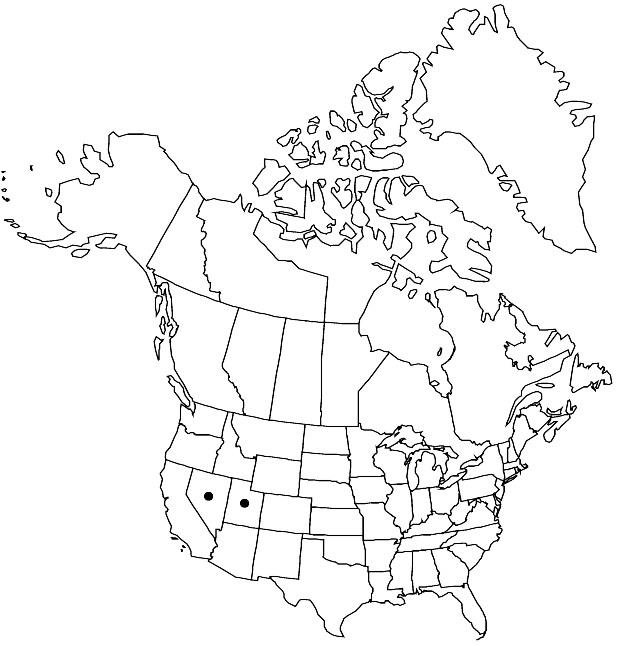Physaria hitchcockii
Novon 12: 324. 2002.
Perennials; (forming loose mats); caudex (buried), branched; densely pubescent, trichomes (short-stalked), 4–6-rayed, rays distinct, bifurcate, (rough-tuberculate). Stems few to several from base, prostrate to erect or spreading, 0.05–0.5(–1.2) dm. Basal leaves: (petiole and blade differentiated or not); blade spatulate to elliptic or linear or narrowly oblanceolate, 0.5–1.5(–2.5) cm, margins entire. Cauline leaves similar to basal, smaller. Racemes dense. Fruiting pedicels (ascending, straight or slightly curved), 2–6 mm. Flowers: sepals narrowly lanceolate to lanceolate, 2.8–6 mm; petals (pale to deep yellow), narrowly lanceolate to oblanceolate, 5–9 mm, (claw undifferentiated from blade). Fruits (sessile or substipitate), globose or subglobose to obovoid, not or slightly inflated, 3–6 mm, (firm, apex acute); valves (reddish in age, not retaining seeds after dehiscence), glabrous throughout; replum as wide as or wider than fruit; ovules 4–8 per ovary; style 1.7–6 mm. Seeds flattened.
Distribution

Nev., Utah
Discussion
Subspecies 3 (3 in the flora).
The taxonomic treatment of Physaria hitchcockii has varied widely over the years. Molecular study (pers. obs.) has shown no direct relationship to P. tumulosa; morphologically, though, P. navajoensis and P. tumulosa appear closely related. Infraspecific taxonomy is based on the presence of a discernable petiole and whether or not the caudex is elastically elongated. The subspecies recognized here are usually geographically coherent, except that collections from the Table Cliff Plateau are more similar to subsp. hitchcockii, disjunct in Nevada, than they are to the very nearly sympatric subsp. rubicundula.
Selected References
None.
Lower Taxa
Key
| 1 | Caudices elongated and elastic; basal leaves: petiole not differentiated from blade, blades linear-oblanceolate; Aquarius, Markagunt, and Paunsaugunt plateaus, Utah (limited to the pink member of the limestone Wasatch (Claron) Formation). | Physaria hitchcockii subsp. rubicundula |
| 1 | Caudices elongated or not, elastic or not; basal leaves: petiole differentiated (sometimes weakly) from blade, blades oblanceolate to obovate; Nevada, Utah | > 2 |
| 2 | Plants forming tufts; caudices not elongated, not elastic; fruits 2.6-3.8 mm wide; Table Cliff Plateau, Utah (limited to the white member of the limestone Wasatch (Claron) Formation) and limestones of the Sheep Range and Spring Mountains, Nevada. | Physaria hitchcockii subsp. hitchcockii |
| 2 | Plants forming soft mats; caudices elongated, elastic (creeping); fruits 1.7-3 mm wide; Grant, Quinn Canyon, and Schell Creek ranges, Nevada. | Physaria hitchcockii subsp. confluens |